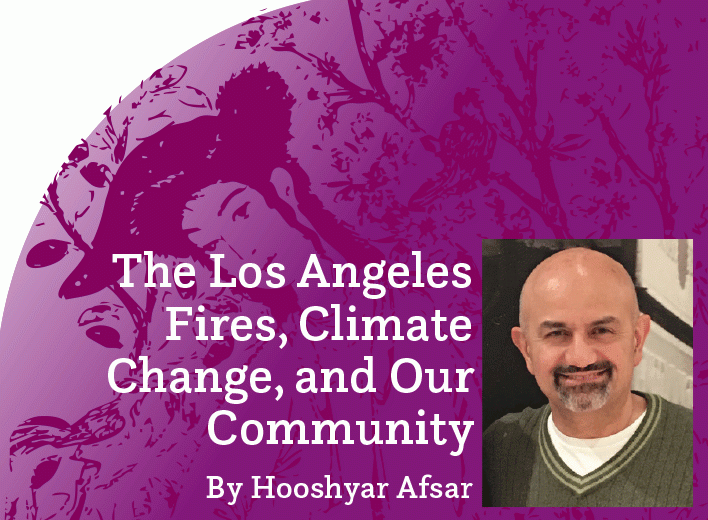Voting Rights: The Future of U.S. Democracy and Immigrant Rights
by Hooshyar Afsar
In the past few months, over 1,200 new voting-related bills have been initiated in both Republican and Democratic majority state legislatures. One thing is clear about these new laws: the ones spearheaded by Republicans will make voting more restrictive and the ones pushed by Democrats will make voting easier. Does any of this have anything to do with immigrant communities in the U.S.? How will each trend impact such communities, including our own Iranian American community? Let’s look.

A Brief History of Elections and Voting in the United States
The 1787 U.S. Constitution did not specifically address who had the legal right to vote in the U.S.; in a sense, the responsibility shifted to the states, leading to disparate results that deprived a large portion of the population of voting and essential citizenship rights to participate in the political process. Of the 13 founding states, 11 had laws that restricted the right to vote to men who owned property (and New Jersey allowed women with property to vote only until 1807). Property qualifications varied in each state. The only one that did not have any property requirements was Pennsylvania, but voting was still limited to men (and primarily to white men for that matter). All 13 states had an age requirement of 21 and only four allowed free Black men who met the age and property requirements to vote. While millions of enslaved people and all native people were not considered citizens and did not have the right to vote, free Black men were treated more like “quasi citizens” in most states. In the early nineteenth century, the right to vote became more and more synonymous with being a citizen as it was acknowledged in Webster’s American Dictionary. On the eve of the Civil War (1861-1865), only five of 34 states (all in New England) recognized the right of free Black men to vote.
And what about immigrants’ voting rights? The 1790 Immigration Act and its successors in the pre-Civil War 19th century limited naturalization (the legal process of becoming a U.S. citizen) to “free white person[s]…of good character.” In effect, while property requirements were all gone by 1856, on the eve of the Civil War in 1861, no non-white immigrants had the right to vote—similar to women, all enslaved people, all native people, and free Black men in 29 out of 34 states.
After the victory of the North’s Union Army in 1865, voting rights for previously-enslaved people became a core part of the political struggle for establishing citizens’ rights. This endeavor culminated in ratification of the 15th Amendment, which banned denial or abridgement of the right to vote by the federal and state governments based on race, color, or previous condition of servitude—which clearly affected immigrants who had been brought to the U.S. as indentured servants. More inclusive proposed versions of the 15th Amendment included all citizens regardless of race or ethnicity and even gender; although those versions did not make it out of congressional committees, the 14th Amendment established birthright citizenship and the question of citizens’ right to vote then included all citizens regardless of race or ethnicity. Notably, the 14th Amendment’s equal protection clause opened the political debate on inclusion of women. The three post Civil War reconstruction era constitutional amendments—namely, the 13th, 14th and 15th—created such a paradigm shift in the definition of U.S. citizenship and the rights of citizens that they became famous as the “Second Founding” of the U.S., deemed a great leap forward for a nation that had only recently enslaved 4 million humans (see a further discussion in Peyk #192 by the same author [March/April 2021]).
After the post-Civil War reconstruction ended with the 1877 compromise and the departure of Union troops from the South, racist terror intensified and state level legislators in the South embarked on an onslaught to turn back the accomplishments of the freed Blacks and progressives toward racial justice. Finally, starting with the 1890 Mississippi Plan (constitution), southern states enacted Jim Crow segregationist policies and voter suppression laws aimed at Black people, including poll taxes, literacy tests, and “white” primaries. It was no accident that, along with these anti-democratic trends, the right of women to vote was again put on a backburner for decades until the ratification of the 19th amendment in 1920.
Immigrant rights, including naturalization rights for all immigrants except white Christians from northwest Europe, were suppressed in parallel with the establishment of Jim Crow segregation in the South, thereby limiting the right of non-white immigrants to vote (for more specific examples on this please see the article on Immigrant Rights by the same author in Peyk #192 [March/April 2021]). This trend continued to a great extent until the Civil Rights movement’s achievements resulted in the Voting Rights Act of 1965, followed by the Immigration Act in the same year, that ushered in a new era for “non-white” immigrants to find their way to the polls through naturalization.
The Future of U.S. Voting Rights
The U.S. population makeup trends toward an increase of non-whites such that by 2045, the white share of the population will drop below 50% as reported by Brookings Institute in 2018. While the share of whites in the U.S. was still over 60% in 2018 and white people continue to control political and economic levers of power by even larger percentages, conservative political forces have used this trend to foment fear of immigrants and communities of color. Donald Trump was very effective in using this fear—he started his campaign in 2015 by attacking Mexican immigrants as rapists and criminals, augmented his anti-immigrant politics by floating a ban of Muslims in 2016, and then put the ban in place via executive order within his first several days in office in January 2017.
The fact is that the majority of new immigrants and an even larger majority among their children (aka second generation Americans) support progressive politics. Based on the data collected by Edison Research for a consortium of ABC, CBS, MSNBC, FOX, CNN, and the AP, Trump lost the non-white vote—including Blacks, Asian Americans, and Lations—by a more than two to one margin in the 2020 presidential election. According to FiveThirthyEight, an oft-cited American polling and analytics site, Indian Americans voted against Trump by a margin of 65% to 28%. Using these margins plus other data (including the Edison Research non-white and religious voter data for the 2020 elections), we can extrapolate and conclude that a solid majority of all immigrant communities, including Iranian Americans (more or less), voted along the same lines against Trump. All this means that the writing is on the wall for Republicans. The current population trends will make it more and more difficult for them to win elections in the U.S. if they play fair and stand for expansion of voter rights. How do you deal with such a big problem?
There is more than one way to deal with the above problem. A post-2012 election Republican National Committee “Growth and Opportunity Project” report made broad and groundbreaking recommendations on making the party more diverse and expanding its base. Yet, with the entrance of Trump into Republican politics, all those recommendations were thrown out. Instead, the party chose the path of lies and voter suppression. Trump lying about the election results started back in the primaries of 2016 when he claimed that he won Iowa and his opponent at the time, Ted Cruz, won by cheating. He then repeated the same claims about Hillary Clinton winning the popular vote by more than 2.8 million votes in the November 2016 presidential elections. Trump didn’t stop there and even formed an election integrity commission that eventually dissolved itself after it could not find any evidence of widespread fraud. So, Trump’s reaction to the results of the 2020 election was consistent with his reactions years earlier—the big difference is that, this time, these lies became the excuse for Republican state legislatures to introduce an unprecedented number of restrictive laws.
According to the Brennan Center for Justice, as of March 24, 2021, 361 bills with restrictive voting provisions were introduced in 47 states. A majority of these bills could become law and they will install new restrictions primarily affecting Blacks and immigrant communities of color in order to reverse progressive and liberal election gains of 2018 and 2020. Some have already been passed and signed into law, including in Georgia, Iowa, Arkansas, and Utah.
Georgia’s SB 202 clearly aims for the reversal of the 2020 results. In November 2020, Georgians not only voted for a Democratic president for the first time since 1992, they then sent two Democratic senators to Washington, DC, in the January 2021 special election, reversing the balance of power in the U.S. Senate. Notably, these recent elections were very close races and people of color, specifically Black women, played a huge role in large population centers to defeat Trump and the incumbent Republican senators. Trump lost Georgia by only 11,779 votes out of almost five million votes cast, a margin of 0.23%. The new restrictions that are being put in place aim to reverse those victories by literally stopping people of color in large population centers, such as Atlanta, from voting; they include closing poles at 5:00 p.m., making it illegal to give food or water to people waiting in line to vote, putting at least five new restrictive measures on absentee ballots, allowing mass challenges so that one person could seek to remove an unlimited number of people from voter rolls as ineligible, and so on. Georgia’s Republican legislators have every intention to restore Jim Crow-like restrictions by resorting to the lie that the 2020 election was stolen from Trump. As a symbolic gesture, Governor Kemp, along with eight white legislators, signed the bill with a painting of a real plantation in the backdrop that enslaved over one hundred people.
In Arizona, seven restrictive bills are advancing; in addition to making the absentee ballot process more difficult for voters, they intend to prohibit voter expansion measures that Arizona doesn’t even have, including automatic voter registration and election day registration. Similar to Georgia, Trump lost Arizona by a mere 10,387 votes, a margin of 0.3%. Trump lost Georgia, Arizona, and Wisconsin combined by a margin of 43,000 votes (0.03% of the total votes cast). If these results were reversed, there would have been a tie of the Electoral College at 269. This shows how important and critical these voter suppression measures could be in future elections.
Republicans are taking action to reverse the impact of population trends and win the 2022 midterm and 2024 presidential elections at any cost. The philosophy behind these blatant voter suppression tactics is that voting is more of a privilege than a right, a privilege that should be restricted as much as possible when it comes to Blacks and immigrant communities of color.
Is It All Gloom and Bust?
The above restrictions are serious and definitely weaken the democratic process. Yet, in another set of 47 states, 843 bills with expansive provisions have been introduced. These measures include expansion of early voting, automatic registration, disability access, and pre-registration of 16 and 17 year olds who will turn 18 by the election date. The most extensive bills to protect voters rights and expand access to polls, however, are at the federal level.
House Bill H.R.1 and Senate Bill S.1 are comprehensive federal legislations that do not limit their scope to expansion and ease of voting—they restore the pre-clearance measures of the 1965 Voting Rights Act that prevented the restoration of Jim Crow restrictive laws in any state, and put in place significant campaign finance reforms and ethics rules at the federal level to stop future foreign interference in U.S. elections, require all presidential candidates to make their tax returns public, and end gerry-mandering (partisan redistricting), which opens the path to restoration of democratic representation at state and federal levels. H.R.1 passed the House of Representatives on March 3, 2021, and S.1 was introduced in the Senate on March 17, 2021. There are ways to push S.1 through the Senate, yet they require the political will to end the filibuster (another vestige of the Jim Crow era).
What Is in it for Iranian Americans?
Here is what history teaches us: as a community, we have consistently benefited when voting has been expanded and the country has taken steps toward racial justice. On the contrary, immigrant communities have become the target when the country has moved away from racial justice and has restricted voting rights; it usually takes a few decades before the most severe effects of such trends become solidified into laws, and overcoming these laws requires costly social movements (in terms of human lives lost and those unjustly imprisoned) to reverse those trends.
For example, after the post-Civil War Reconstruction era ended it took 13 years before Jim Crow became law of the land in the South, starting with Mississippi. The U.S. Supreme Court (SCOTUS) played a key role in allowing discriminatory and racist bills to become law at the state level. Then, it took another 75 years to reverse those laws. What we see today did not happen overnight either. The system of racial and social control under Jim Crow segregation mutated to a new regime that has been coined the “New Jim Crow” by author Michele Alexander in a book of the same name. The core aspect of this new system is mass incarceration of Black and Brown people (primarily men), resulting in the U.S. having over 21% of the world’s prisoners despite having less than 5% of the world’s population. And SCOTUS did its (racist) share again by reversing the preclearance clause of the 1965 Voting Rights Act in Shelby County vs Holden ruling in 2013, leading to expansion of voter suppression in southern and midwestern states within hours of the ruling. History is being repeated with the new characteristics of our times.
One might disagree and say that these are different times. I like to be optimistic, yet progressives were to a great extent falsely optimistic during Reconstruction in the 19th century and during the Obama years in the first and second decades of the 21st century. The current onslaught against voting rights—if successful—will impact all of our lives and our children’s lives. It will impact our immigrant community regardless of our legal status. There are early signs of what future could hold for our community: stopping American citizens of Iranian descent at the Canadian border coming back from ski trips, hate crimes against our community members, closing of our bank accounts by major financial institutions, and Senator Lindsey Graham calling all Iranians liars—and these actions can easily turn into severe statewide and nationwide restrictions and undemocratic measures. It is urgent for us to raise awareness and act using all peaceful measures before it is too late.


















